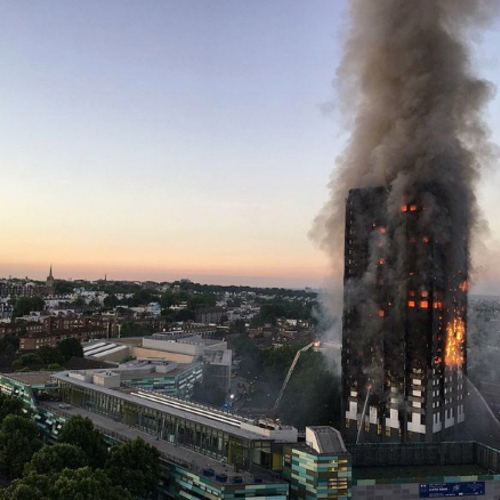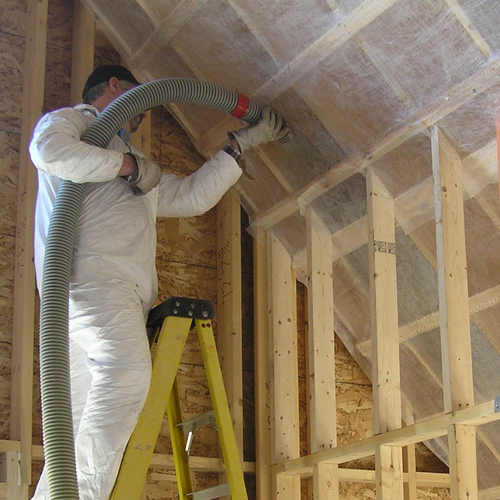
Last October, an investment property that Woytek Stachowki owned in Edmonton, Alberta, was gutted by fire. That was bad enough, but a month later the other shoe dropped: He received a bill for $12,800 from Edmonton Fire Rescue Services.
The reason? Stachowki’s house was insulated with cellulose, and the fire department says it had to hire an outside contractor to remove the insulation and make sure the fire was really out.
In a report posted by CTVNews, Stachowski said he thought the bill showed up by a mistake and that his insurance company should have been covering any expenses related to the fire. “I think as a taxpayer I shouldn’t get this at all,” he told the station.
The fire department says otherwise. In a telephone call, spokeswoman Maya Filipovic said the practice dates to at least 2015, and possibly earlier, and that the department sends out similar bills between eight and ten times per year. Charges typically range from $8,000 to $13,000.
Insurance companies have historically footed these bills, so homeowners haven’t squawked. But Filipovic said there’s been more pushback from insurers recently. That’s left Stachowski with an unexpected bill after suffering a major catastrophic loss.
The cause of the fire was not determined.
It’s not clear where the bill stands. Stachowski said by telephone that his insurance company tells him it will pay $1,500 of the bill but the rest is up to him. The television report, however, says his insurance company has offered to pay the bill but would deduct that from his settlement.
Very detailed charges
Fire department accountants were exacting in their assessment of charges. Stachowski was charged for use of a vacuum truck, labor, air testing, the use of a generator, work lights and extension cords, hydrant meter and water fill, respirators (including replacement filters), Tyvek suits, hook tools, rakes and hoes, waste removal, and equipment washout. Oh yes, and a $19.12 carbon tax.
Filipovic explained the rationale for the department’s policy this way: Cellulose insulation — which is typically chopped up newspaper — is common in attics. When a fire breaks out, embers can become lodged in the insulation and smolder for hours, raising the possibility the fire will reignite. In order to make sure there’s no chance of that happening, the department brings in an outside contractor to tear the insulation out.
A photo of the bill posted by CTVNews appears to show this process took seven hours and involved four if not five people. Stachowski was billed at their “emergency rate.”
If the bill caught Stachowski by surprise, his representative on the Edmonton City Council, Mike Nickel, was no less flabbergasted. “It doesn’t make any sense,” he said in a call with GBA. “Why the extra bill?”
Filipovic said she was unable to comment on specifics of the bill.
“I can’t comment on the line items or the reasoning behind each,” she said in an email. “That would be up to the vendor to respond as this is their bill not ours. But every vendor we use is vetted by the city and goes on an approved vendor list.”
Nothing like in the U.S.
The practice of billing homeowners because their houses were insulated with cellulose apparently isn’t done in the U.S.
“I’ve never heard of such a thing,” said Robert Solomon, a fire protection engineer with the National Fire Protection Association.
Rob dePruis, director of consumer and industrial relations with the Insurance Bureau of Canada, an industry trade group, said most homeowner insurance policies cover firefighting expenses. But policies also may limit the amount of a payout, and that could have been what happened in Stachowski’s case. There are some 150 companies in the province offering insurance policies, so there are many variables in what they offer.
The takeaway is to make sure you know what your policy will pay, he said.
Municipalities are permitted to charge firefighting expenses to residents, dePruis said, as described in their bylaws. In some cases, as with Edmonton, the removal of debris from the house would be outside the bounds of what’s typically considered firefighting — that is, a job outside the expertise of a firefighter. That could prompt the use of an outside contractor.
Cellulose insulation is treated with fire retardants and has a Class 1 fire rating, according to the Cellulose Insulation Manufacturers Association. The trade group’s website says cellulose meets all federal, state, and local fire safety regulations in the U.S., and adds that walls with cellulose insulation can help control the spread of fire.
The association cites both a low flame spread and low smoke development index. “When properly installed, cellulose insulation can help reduce the spread of flames in house and building fires. Some cellulose manufacturers have even qualified two and three hour firewall designs using cellulose insulation,” the website claims.
Insulation can conceal hot spots
Dan Lea, the executive director of the Cellulose Insulation Manufacturers Association, said Edmonton’s concerns that embers may be buried in the insulation are not misplaced. Its billing practices are another issue.
“I’ve never heard of a policy like this anywhere else,” he said by telephone. “Basically what they are doing is penalizing the homeowner because the cellulose insulation mitigated the damage. There was a building left for them to overhaul, and now they’re charging the homeowner for doing their job.”
He said firefighters must make sure there are no remaining hot spots, which may be hidden even from thermal imaging.
“That’s a well known fact, that cellulose suppresses the movement of fire through insulated assemblies,” he said. “You have to root around and make sure you’ve got it all.”
Lea said that even a major cellulose manufacturer located in Edmonton had never heard of the city’s billing practices.
“It’s just part of the overhaul process,” Lea said. “Are they going to charge for overhauling an area where they have wood flooring? Are they going to charge for pulling down a wood shingle roof where there’s been some fire damage?”
This post has been updated with comments from the Cellulose Insulation Manufacturers Association.
Weekly Newsletter
Get building science and energy efficiency advice, plus special offers, in your inbox.















4 Comments
As i said in the discussion here around this topic, it would be interesting to see the fire department's enabling legislation. I doubt there is any legal basis for these charges. I'm surprised the insurance companies haven't challenged them. There is very little chance they would survive in court.
I assume the fire department's primary objective is fire-mitigation and prevention, without any regard to restoration. So if that means completely dousing/soaking a space and ruining/destroying it, they don't care, as long as the fire is out and there's zero chance of re-ignition. I imagine the same applies to cellulose insulation- that their goal is 100% assurance the fire is out and won't come back, and if that means ripping out all the insulation, so be it.
Regarding legal-basis, perhaps they weigh this insulation removal effort against the liability/risk of fire returning, for which they'd presumably get sued.
Hi I've been trying to learn about this issue and found the article below:
https://www.firefighternation.com/articles/2011/11/fire-cellulose-insulation.html
It seems the issue is that, from the perspective of a firefighter, you can never be 100% certain that the fire is out, because cellulose doesn't smoke very much and so can conceal a slow smoldering fire. Per the article,
"When cellulose insulation burns in an attic space or within a wall, it typically burns from the bottom up, and it burns at such low temperatures that even the best thermal imaging camera (TIC) may not pick up the traces of heat. Additionally, when the insulation is blown in, it makes a thick blanket that can hide the signs of fire. So, at first glance, it can be difficult to tell that a fire is even burning. But don’t be lulled into thinking that a fire in the cellulose doesn’t exist because you don’t see it on a TIC. "
I have no experience/knowledge on this issue. I'm assuming the article is legit, it's not an anti-cellulose article but one directed at fire/rescue professionals.
Would be interested if the greater GBA community has any thoughts or experience. Are there any best practices for cellulose insulation around electrical boxes etc?
Not clear to me why the same wouldn't apply to other insulation - any insulation can hide wood embers from a camera. It is a valid concern - a friend's house recently "re-ignited" (but I don't know the insulation type).
Evidently dogs (and perhaps some sensors) can detect hidden embers. Maybe the fire dept isn't doing the cost effective thing.
Log in or create an account to post a comment.
Sign up Log in